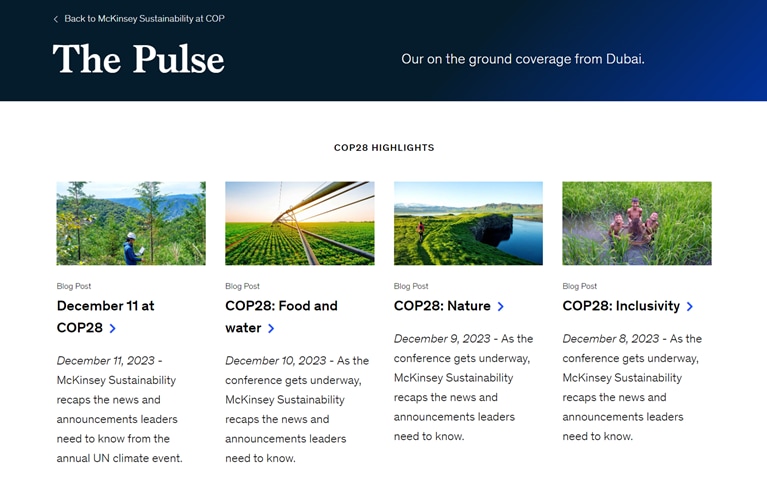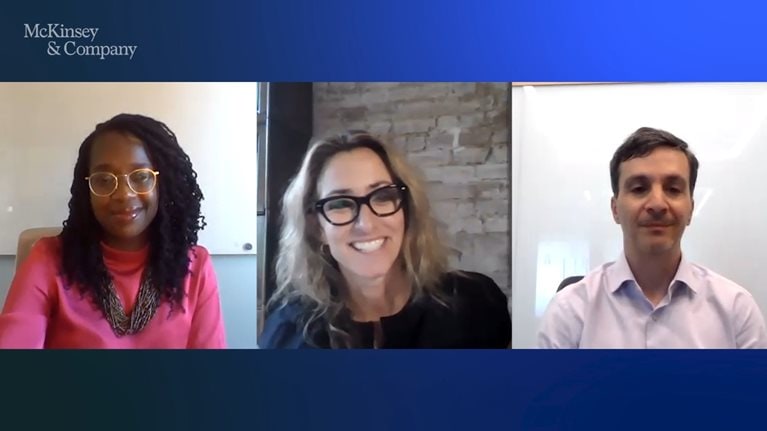Negotiations at COP28 have concluded with a final agreement made on global “transition away from fossil fuels.” This is the first time the shift away from fossil fuels has been explicitly included in a final agreement at a COP. Further work is now needed to translate this commitment into action and to take the steps necessary to keep the 1.5°C target within reach. Two things are clear for leaders: momentum toward net zero continues to build but significantly more is needed, both to increase ambition and to deliver on existing pledges and commitments.
As well as the final negotiated text, leaders made commitments aimed at accelerating progress toward the goals set out in the Paris Agreement. Over 100 countries committed to tripling renewable energy, the Loss and Damage fund was operationalized, major players in the oil and gas sector committed to decarbonizing their direct emissions and taking significant steps towards reducing methane emissions, and over 100 countries signed a declaration to focus on the impact of food and land-use changes on carbon emissions.
In Dubai, leaders discussed strategies to accelerate climate action and growth in the net-zero transition. For example, companies and industries can speed the decarbonization of hard-to-abate sectors—starting today. Incumbents, investors, and start-ups can hyperscale new green businesses, spurring adoption of innovative climate technologies. And the financial sector can deploy investment at scale to decarbonize and support transformative climate solutions.
To help you navigate activity at COP28, we created Daily Pulse recaps of news and announcements, as well as summaries of McKinsey events. You can access them all below, along with on-demand replays of our events, collections of relevant publications, and videos from our experts.
In case you missed it: McKinsey at COP28
COP28: What was achieved and what comes next?
At McKinsey’s final, closing-day event, members of the COP28 leadership team and McKinsey Sustainability came together to share their perspectives on key milestones achieved at COP28. McKinsey’s Joe Rahi and Cindy Levy led the discussion, exploring questions like: What great debates occurred? What impact will the agreements have? What has not yet been achieved? And, importantly: What comes next?
- A clear vision on what comes next. Cindy Levy noted: “The language of this COP has been about achieving 1.5° and how we keep that in reach. I believe this shared aspiration will endure and will ensure we can close the ambition gap, finance gap, and adaptation gap.” Sabrin Rahman (Director, Partnerships, COP28) explained: “Collectively, we had the opportunity to create the blueprint of what we feel should represent a COP of the future, an innovative, multi-stakeholder-led process that really makes real-world impact.”
- Financing technology and start-ups is key. Ninety percent of the greenhouse-gas (GHG) abatement that we need could come from proven technologies. However, to limit global warming to 1.5°C, these technologies need to scale exponentially by 2030. COP28’s Marcin Ścigan (Deputy Director of Partnerships) highlighted the role of start-ups in furthering innovation and achieving the scale we need. He noted that only 10 percent of venture capital (VC) funds go to climate tech—for MENA, it is only 5 percent. “Only start-ups can deliver this new technology, and our agenda was to facilitate a place at COP where finance and innovation can collide.” Initiatives like the GBB100 program, a collaboration between COP28 and McKinsey, aim to support green-technology startups and scale-ups.
- COP cannot just be a place for announcements. Big announcements are only relevant if they are accompanied by accountability. And collaboration, facilitated by COP, can help assure commitments become reality. COP28’s Elias El Mrabet (Senior Specialist, Finance Partnerships) highlighted the importance of the $30 billion ALTÉRRA Fund, “Which is allowing us to develop a completely new way of seeing climate and investing into climate, creating a new climate economy. But announcements like this alone don’t mean much—they need to be a part of a larger framework.” Surabi Menon (Executive Director, Partnerships, COP28) agreed, underscoring a key takeaway for future COPs: “We need to be inclusive and not just add new initiatives, but expand on previous initiatives by growing numbers of engagements. Moreover, building and driving real change with the money that is being delivered is a crucial next step.”
- Cross-industry collaboration is a critical factor to success. If we are to achieve the global goal of 1.5°C, a siloed approach cannot persist. To mobilize the capital required for the net-zero transition, Saamir Elshihabi (Principal Lead, Energy Transition, COP28) explained: “You cannot think about climate finance only from a governmental perspective. If you want to unlock the trillions, you need to have everybody around the table—philanthropies, the banks, the venture capitalist investors. This is how you define a new climate economy.”

COP28 Daily Pulse
Read all our on-the-ground daily coverage of news and announcements from COP28. Each day, we recapped what business leaders needed to know about actions global leaders were taking, as well as insights from our own events in the Green Zone.
.jpg?cq=50&mw=767&cpy=Center)
Events on demand
McKinsey convened senior executives and civil-society leaders in the COP28 Green Zone in Dubai for a series of events focused on how to achieve the world’s climate ambitions while creating economic opportunity for people, communities, and businesses. Watch replays of our sessions.

Publications
Read our latest research on key themes discussed at COP28, including how to accelerate the net-zero transition, scaling climate technology, adaptation, and nature.

Conversations on COP28
McKinsey experts explore the critical themes that will inform discussions at the UN Climate Change conference, including accelerating innovation in climate technology, addressing the finance gap, scaling carbon removals, navigating the energy transition, and ensuring adaptation and inclusion are central to our journey towards a sustainable future.